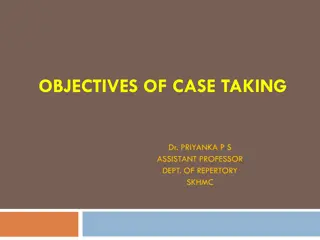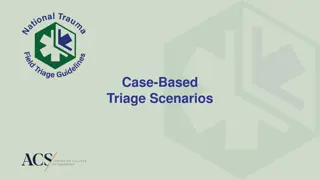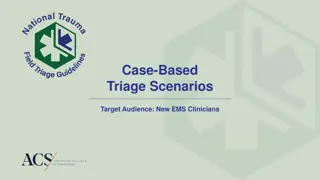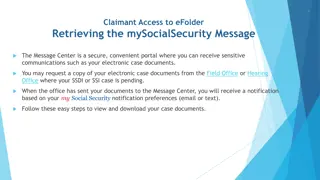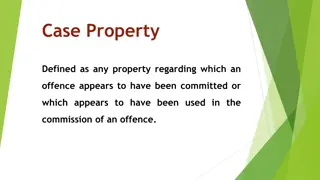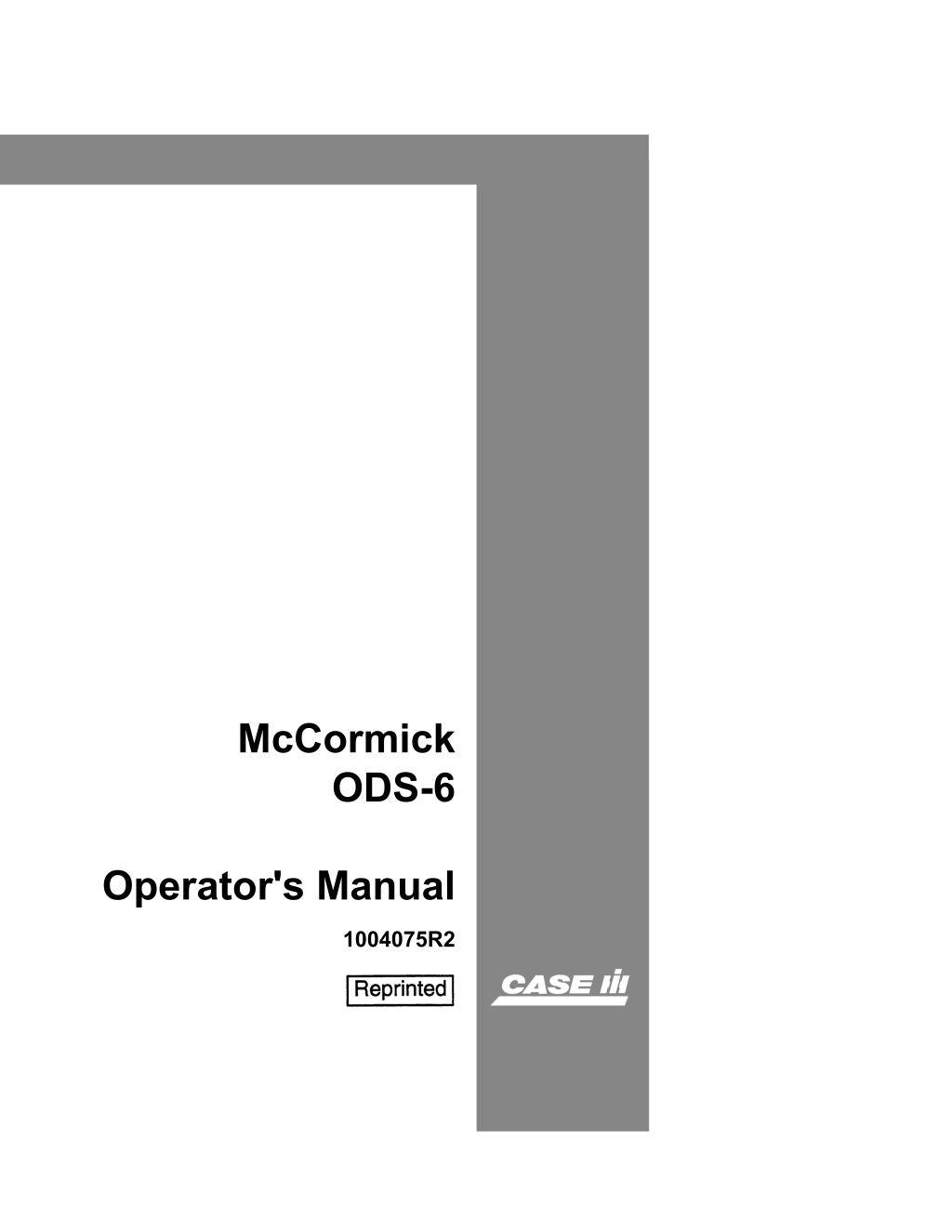
Case IH McCormick ODS-6 Tractor Operator’s Manual Instant Download (Publication No.1004075R2)
Please open the website below to get the complete manualnn//
Download Presentation

Please find below an Image/Link to download the presentation.
The content on the website is provided AS IS for your information and personal use only. It may not be sold, licensed, or shared on other websites without obtaining consent from the author. Download presentation by click this link. If you encounter any issues during the download, it is possible that the publisher has removed the file from their server.
E N D
Presentation Transcript
McCormick ODS-6 Operator's Manual 1004075R2
THIS SAFETY ALERT SYMBOL INDICATES IMPORTANT SAFETY it ALERT TO THE POSSIBILITY OF PERSONAL INJURY OR DEA TH. MESSAGES IN THIS MANUAL. WHEN YOU SEE THIS SYMBOL, , CAREFULL Y READ THE MESSAGE THA T FOLLOWS AND BE M171B If Safety Decals on this machine use the words Danger, Warning or Caution, which are defined as follows: DANGER: Indicates an immediate hazardous situation which if not avoided, will result in death or serious injury. The color associated with Danger is RED. WARNING: Indicates an potentially hazardous situation which if not avoided, will result in serious injury. The color associated with Warning is ORANGE. CAUTION: Indicates an potentially hazardous situation which if not avoided, may result in minor or moderate injury. It may also be used to alert against unsafe practices. The color associated with Caution is YELLOW. If Safety Decals on this machine are ISO two panel Pictorial, decals are defined as follows: The first panel indicates the nature of the hazard. The second panel indicates the appropriate avoidance of the hazard. Background color is YELLOW.I\:\ it WARNING IMPROPER OPERATION OF THIS MACHINE CAN CAUSE INJURY OR DEATH. BEFORE USING THIS MACHINE, MAKE CERTAIN THAT EVERY OPERATOR: Prohibition symbols such as \::::I X and e if used, are RED. Is instructed in safe and proper use of the machine. Reads and understands the Manual(s) pertaining to the machine. Reads and understands ALL Safety Decals on the machine. Clears the area of other persons. Learns and practices safe use of machine controls in a safe, clear area before operating this machine on a job site. It is your responsibility to observe pertinent laws and regulations and follow Case Corporation instructions on machine operation and maintenance. Bur 0-00000 2001 Case Corporation March, 1995 (Revised October, 1997) CASE and IH are registered trade marks of Case Corporation
https://www.ebooklibonline.com Hello dear friend! Thank you very much for reading. Enter the link into your browser. The full manual is available for immediate download. https://www.ebooklibonline.com
THIS SAFETY ALERT SYMBOL INDICATES IMPORTANT SAFETY it ALERT TO THE POSSIBILITY OF PERSONAL INJURY OR DEA TH. MESSAGES IN THIS MANUAL. WHEN YOU SEE THIS SYMBOL, , CAREFULL Y READ THE MESSAGE THA T FOLLOWS AND BE M171B If Safety Decals on this machine use the words Danger, Warning or Caution, which are defined as follows: DANGER: Indicates an immediate hazardous situation which if not avoided, will result in death or serious injury. The color associated with Danger is RED. WARNING: Indicates an potentially hazardous situation which if not avoided, will result in serious injury. The color associated with Warning is ORANGE. CAUTION: Indicates an potentially hazardous situation which if not avoided, may result in minor or moderate injury. It may also be used to alert against unsafe practices. The color associated with Caution is YELLOW. If Safety Decals on this machine are ISO two panel Pictorial, decals are defined as follows: The first panel indicates the nature of the hazard. The second panel indicates the appropriate avoidance of the hazard. Background color is YELLOW.I\:\ it WARNING IMPROPER OPERATION OF THIS MACHINE CAN CAUSE INJURY OR DEATH. BEFORE USING THIS MACHINE, MAKE CERTAIN THAT EVERY OPERATOR: Prohibition symbols such as \::::I X and e if used, are RED. Is instructed in safe and proper use of the machine. Reads and understands the Manual(s) pertaining to the machine. Reads and understands ALL Safety Decals on the machine. Clears the area of other persons. Learns and practices safe use of machine controls in a safe, clear area before operating this machine on a job site. It is your responsibility to observe pertinent laws and regulations and follow Case Corporation instructions on machine operation and maintenance. Bur 0-00000 2001 Case Corporation March, 1995 (Revised October, 1997) CASE and IH are registered trade marks of Case Corporation
1 SPECIFICATIONS Capacities (U.S. Measure) A i ~ Fuel tank Gasoline tank Water cooling system. Crankcase pan Injection pump (Bosch). Injection pump (IR) tTransmission and differential case. r Also .8e lubrIcatIon chart. Engine (Dtesel Type) Cylinders B o ~ e Stroke. Engine speed ~ m i n i m u m speed) maximum idle speed) (no load) maximum full load) Power take-oCf shaft speed ~ l O W idle) (no load) fast idle) (no load) maximum) (full load) Fuel injection pump Carburetor - IH type (dual manifold starting) Magneto (counterclockwise). Spark plug gap Valve clearance (engine hot) c l e a n e ~ oil cup 2-3/4 pt. 20-1/2 gal. 7/8 gal. 6-3/4 gal. A p p ~ o x . Approx. Approx. Approx. Approx. Approx. A p p ~ o x . Approx. 9 qt. 3/8 pt. 1/2 pt. 13 gal. 3-7/8 in. 5-1/4 in. 41 450 to 550 r.p 1610 r.p.lI. 1450 ~ . p . m . 185 r.p.lI.. 596 r.p.lI.. 537 r.p.lI.. IB or Bosch IB Type B-4 .020 in. .017 in. Clutch and Belt Pulley Over-center type (band controlled). Pulley speed f Cast idle) (no load) maximum) (full load) Belt speed (feet per minute) Pulley diameter Pulley face 11 in. low idle) (no load) 310 r.p.lI.. 998 r.p.lI.. 899 r.p.lI.. 2588 . 11 in. 7-1/2 in. Foot Brakes Double d1sc. Transmission (Five Speeds) Speed based on p n e u m a t i C { f ; ~ ~ sizes. 14 - 26 2-3/8 3-1/8 4-1/8 2nd. ! ~ : : : 5th. Reverse. Speed (miles per hour) 5 14-7/8 3-1/4 Wheels and Tread Front wheel pneumat1c tires Rear wbeel pneumatic tires. Tread ~ front Tread - rear. Wheelbase General - Dtmensions Length over-all (to end of swinging drawbar). W1dth o v ~ r - a l l (across rear tires) Beight over-all (to top of hood) Clearance under front axle. Lateral hitch pOSitions (stationary drawbar). 6.00 - 16 14 - 26 46-3/4 in. 45 in. 76-1/4 in. 133-1/4 in. 61 in. 61-5/8 in. 15-1/4 in. 6-1/4 in. on each side of center hoI., .11-1/2 in. on eacn Side of center hole Swinging drawbar lateral swing SWingtng drawbar (adjustment from ground) Stationary d r a w b a ~ (adjustment fro. ground) . 12-7/8 in., 16-7/8 in. and 20 in. Turning radius (without brake applied). ~ i n g radiuB (with brake applied) 11-1/4 ft. 11-1/2 in., 16-1/2 in. and 20-1/2 in. 12-3/4 ft.
View of Model ODS-6 Tractor. lighting Attachments are furnished when ordered. The Swinging Drawbar and Starting and BEFORE STARTING YOUR NEW TRACTOR Making a complete inspection or the tractor for any shortage or damage which may have occurred during shipment. gine, when shipped from the fac- tory, is for preservative purposes only and is not SUitable for use in regular service. The original oil should be drained from the crankcase, air cleaner, and in- Jection pump and replaced with the required amount of fresh oil hav- ing the physical properties and proper viscosity grade for the type of service. Tractors shipped export have had all oil drained fro. the crankcase. air cleaner, and injection puap. LUBRICATION Lubricate the entire tr&ctor, using the LUBRICATION CHARTS (pates 17 to 22) as a guide. Check the oil level of the en- gine crankcase, air cleaner, transmission case, and steer- ing gear case, to see that they are filled to the correct level with the proper grades of 011 for prevailing temperature; refer to the specifications of lubricants on pates 23 to 25. Tractors shipped to destinations in the United States of America, Canada and Mexico are filled with oil before leaving the factory. However, the lubricant in the crankcase, air cleaner, and injection pump of a Diesel en- DIESEL FUEL OIL SPECIFICATIONS The best guide to follow when selecting tuel for use in the International Diesel engine is the set of tuel specifications prepared and recommended by the builder. Most refiners now market fuel designated as Diesel fuel to distinguish it from burner fuel. Although similar to burner fuel, the Diesel fuel is usually made
BEFORE STARTING YOUR NEW TRACTOR Continued DIESEL FUEL SPECIFICATIONS - Continued from the straight run distillates, while the burner fuel may contain sufficient quantities of the lower ignition, catalytic cracked dis- tillates to make it unsatisfactory to use in the International Diesel engine. available, the No. I-D (light) fuel may be used. Sowever, this lighter fuel bas a lower heat content and lower viscosity. Its use may-result in loss of power and/or increased fuel consumption and shortened injection pump life. However, No. l-D fuel may be re- quired in sub-zero weather in order for the pump to maintain an adequate flow of fuel. Some refiners are marketing one grade of fuel for use in both Diesel and burner applications. This fuel, when within the spe- cifications shown below, can be safely used. However, maintain- ing the quality and suitability of 2-D ~ p e c i f i c a t i o n s , their compo- these fuels for International Diesel engines is definitely the responsibility of the supplier. Fuels lighter than kerosene will not give satisfactory performance in International Diesel engines. Although some fuels meet the Ho. . sition may be such that unsatis- factory engine wear and excessive deposits may result unless high additive lubricating oil is used. Knowledge of the fuels in your area and the types of crankcase oils required for satisfactory performance with these fuels will avoid serVice problems. doubt, see your International Harvester dealer. Diesel fuel for high speed Diesel engines is now obtainable in the U.S.A. in two grades, namely No. I-D (light fuel) and No. 2- D (heavy fuel). When in No. 2-D fuel gives the most sat- isfactory performance in Inter- national Diesel engines when the physical properties are within the limits of the following specifi- cations: Water and sediment will tend to clog the filters. If water passes through them it will cor- rode the pump plungers and other highly finished parts in the pump and nozzles, thus greatly shortening .their lives. The fuel must be free from water, sediment and residue. Gravity - Mimimum Flash point - Minimum-12So F Min. or legal Pour point - 100 lower than min- imum anticipated temperature. Cloud point - Preferable no more than 100 higher than pour point. Water and Sediment Carbon Residue (10% Residuum) Ash (by weight) Distillation: Initial Boiling Point Min.32SoF. 50% Boiling Point Min. End Boiling Point Min. End Boiling Point Max. Sulphur by weight Cetane Number Copper strip corrosion 3 hour; 30 API Buy clean fuel and keep it clean. Store fuel in tanks equipped with bose and nozzle because the fuel is less likely to become contami- nated. I None 0.25% Max. 0.02% Max. Do not use funnels, cans and drums because they are difficult to keep clean. 4750F. 6100F. 7250F. Handle the fuel as little as possible. 0.5% Max. 40 Min Always fill the engine fuel tank at the end of each day to reduce condensation. Drain the water trap daily. Following these rules will pay dividends. at 2120F. 3 NPA Max. Color When No. 2-D fuel confo.ming to the above speCifications is not
BEFORE ST ARTINO YOUR NEW TRACTOR - Continued PNEUMATIC TIRES (2) Fill the radIator to a level 2-1/4 tnches below top ot fIller neck. (See Illust. 26.) 1ng to this level wIll allow tor expansion of the coolant under normal operating cond1tions. Before movtng the ~ a c t o r , check the air pressure in the pneuma t1c tires and tnrlate or d e ~ l a t e the tires to the correct pressures os s h o ~ n on ~ o , e 56. F 1 1 l ~ (3) When f1l1ing the radiator, remove the pipe plug 1n the thermostat hous1ng, and replace the plug when water appears. (4) If the tractor is to be op- erated 1n freez1ng temperature (320 F. or lower), refer to )COld feather Operatlon,W pa'es 11 and 12. ENGINE COOLING SYSTEM (Pressure Type) The cooltng system capacity Is approximately 6-3/4 U.S. gallons. (1) Be sure the dratn cock on " the left Bide of the engine and the cap on the rad1ator drain pipe are tight. HOW TO PREPARE YOUR TRACTOR FOR EACH DAY'S WORK FUEL SYSTEM Gasoline tank Fill the fuel tank (capacity 20- 1/2 O.S. gallons) at the end of each day's run. This will force out any mo1sture-laden air and prevent condensation. F1ll the gasoline tank (capacity 7/8 U. s. gallon) with a good grade ot clean 18s01Ine. Carefully strain the gasoline and DIesel fuel to be sure that 1t is free from foreign substances. Do not use dirty fuel" (see "Diesel Fuel SpecifIcatIons on pates 2 and 3J Fuel tank filler cap filler cap Fuel tank Mut-olf ,/ Gas Ii yaJ.e ~ 'k \. ~ ~ : : ~ ~ ~ : ; o J : . : : um ohu;.:ffe ::ive Illust. I - Diesel Fuel and Gasoline Tanks. Exercise extreme care when fill- ing fuel tanks from drums or s1m1lar containers. "DIesel Fuel Stora'e," pa'e 3 ) (Refer to COOUNG SYSTEM LUBRICATION (1) Change the 011 in the air cleaner oil cup. (2) Be sure the 011 in the crankcase pan is up to the "FULL" mark on the oil level gauge. (3) Refer to the lubrication chart ( p a ~ e s 17 to 22) ~ plete lubrication requirements. Remove the rad1ator cap and check to see that the coolant comes up to within 2-1/4 inches of the top of the filler neck (see IlZust. 26). replace the rad1ator cap and tighten it to the stop after you have made the 1nspection. Be sure to com- o r
5 INSTRUMENTS AND CONTROLS (See Illusts. 2 and 3) Heat indicator Oil indicator ~ ~ A m m e ( e r release lever --.. - - - h ~ - - - - I ! l l 2 i n e .peed - - - - ~ ~ ~ ~ I \ Belt pulley - conrrol rod lever "F Brake pedal lock control rod--------Jr-\:-------tll!Jl Illust. 2 Instruments and Controls. On.. PRESSURE INDICATOR ENGINE SPEED CONTROL LEVER The engine speed control lever controls the speed of the engine and when set in a given posi- tion, maintains a uniform engine speed under variable loads. This instrument indicates whether sufficient oil is Circulating through the engine. The indicator needle should be in the white area when the engine is o If the indicator is not in the wh1te area, stop the engine immediately and investigate the cause of the oU pressure failure. p e r a t i n ~ RADIATOR SHUTTER CONTROL CRANK The radiator shutter is not reg- ular equipment on Diesel trac- tors. The control crank opens and closes the shutter, control- ling the engine temperature. Turn the crank counter-clock- wise to close the shutter and clockwise to open it. In cold weather, close the shutter when starting the engine and adjust it as required to hold the needle of the heat indicator in the center of the "RUN" range for best engine performance. HEAT INDICATOR The temperature of the liquid in the cooling system can be checked with this gauge. CLUTCH HAND LEVER The clutch hand lever is used to disengage the engine from the transmission. lever all the way back to disengage the engine clutch. Pu1l the
e INSTRUMENTS AND CONTROLS. Continued CHOKE LEVER (On Carburetor) (See Illust. 3.) fore stopping the engine, and then place the compression re- lease lever back in Diesel position after the engine has stopped. The choke lever assists in start- ing "hen the engine is cold. Turning the choke lever clockw1se shuts off the air to the carba.- retor, giving a r1ch mixture. After the first fe" revolutions of the e n g i n e ~ turn the choke lever counterclockwise to a point where the engine operates steadily. After the engine has operated a short time, turn the choke lever counterclockwise all the way. GEARSHIFT LEVER The gearshift lever 1s used to select the various gear ratios provided in the transmission. There are five forward speeds and one reverse speed. (Re fer to addtttonal tnstructtons on pa'e 10.) It 70ur tractor 1s equipped nth steel rear wheel . attachment. the 5th. speed shollld be locked out b7 inserting the 5th. speed lock out screw into the tapped hole near the left front end of the rear frame cover. NOTE: BRAKE PEDAL LOCK CONTROL ROD '!'he brake pedal lock control rods are used to lock the brake pedals in the pressed-in position to prevent the tractor trom moving. Illust. 3 - Choke Lever and Ther.ostat Vent Plug. BRAD PEDALS COMPRESSION RELEASE LEVER The brake pedals are used (1) to stop the motion ot the tractor. (2) to hold the tractor in a stationary pOSition, and (3) to assist in making sharp turns. (1) The pedals should be operated in unison for stopping the motion ot the tractor. (2) The pedals should be pressed down firmly, and then locked b7 means of the brake pedal lock, to prevent the tractor from moving. (3) The pedals should be operated individually to make sharp turns b7 depressing the pedal on the side toward which the turn is to be made. Pul.ling down on the compress1on release lever converts the Diesel engine into a gasoline engine for starting. Reduced compression, spark plug i g n i t 1 o n ~ and carbureted gasoline ruel permit starting the engine as a gasoline engine. After a quick cylinder "arm-up, switch the engine to D1esel operat1on by pushing the compression release lever all the "ay up. Refer to pates 8 and 9 for correct method of starting on gasoline and changing to Diesel operation. Refer to pate 9 tor changing back to gasoline operation be-
7 OPERATING PRECAUTIONS .. .. -... 4 ' : . ~ . . : - ~ ' A Illult. 5 - Air Vent Holes In 6alollne Tank Cap. IIIuat. ~ - Correct Method of Pour Ing &alollne Into Tank. the same time, check the spark plug gap, which should be .020 inch. After drying the spark plugs, replace them in the en- gine, and start the engine in the usual manner. (1) Safety Flrstl Never f111 the gasoline tank when lamps are lighted, when near an open flame, or when the engine is operating. Keep the funnel and ~ o n t a i n e r , used for pouring in the fuel, in contact with the metal of the tank (see Illust. 4). doing you will avoid the pos- sibility of an electric spark igniting the 'gas. Do not light matches near gasoline as the air . within a radius of several feet is permeated with a highly ex- plosive vapor. By so (5) When hand-cranking the engine the operator should stand in a position that will eliminate any possibility of being struck by the starting crank 11' there 1s a reversal of the direction of the engine. Crank the engine by using quick up-strokes; do not sptn it. (2) Be sure that the vent holes in the fuel and gasoline tank filler caps are kept open at all times to assure proper flow of the fuel (see Illust. 5). When adding water (6) CAUTIOI: to the cooling system, follow instructions given in "Pressure- Type Cooling System," pages 46 to 48. - (3) Do not operate the starting motor (if tractor is equipped with one) for more than approx- imately thirty seconds at any one time. (7) Never operate the engine at more than the regular governed speed. Excessive speeds are harmful. (4) If trouble is experienced in starting on gasoline in cold or damp weather, the spark plugs should be removed and wiped off, removing any condensation. At (8) Do not "ride" the brake pedals as this w111 result in excessive wear on the linings.
, ~ ____________________________________________ _ e ~ OPERATING PRECAUTIONS Continued (9) Pulled loads should be at- tached to the drawbar. Hitch- ing chains or ropes to axles or other parts or the tractor is dangerous and may cause perma- nent damage to the tractor. ~ , lL . ~ ! ~ \ (10) Immediately arter the en- gine starts, check 'the 011 pres- sure indicator to see ir it is registering pressure (see Illust. 6). Ir it is not, stop the en- gine and inspect the oil system to determine the cause or railure. Ir unable to rind the cause, be sure to consult your Interna- tional Harvester dealer berore operating the engine. . \" \ ~ ' , . , , _ . .,. . " ,JJ,,:: ~ ~ Illust. 6 . Oil Pressure Indicator. (13) CAUTION: When starting the engine in a barn or garage, ,keep the doors wide open. from all internal combustion en- gines contains deadly carbon mon- oxide gas which is odorless, tasteless and colorless. (14) CAUTION: Gears are not to be shifted while the engine clutch is engaged or while the tractor is in motion. Exhaust gas (11) It the tractor is equipped with a power take-ofr, stop the power take-off before dismount- ing from the tractor. (12) Be sure to replace'the lu- bricating oil filter elements, and to clean the air cleaner at regular intervals as spec1ried. OPERATING THE DIESEL ENGINE Four steps necessary in operating this Diesel engine (1) Starting the engine on the gasoline cycle. (2) Changing to the Diesel cycle, (3) Changing back to gasoline operation before stop- ping the engine to facilitate next starting. (4) Putting the compression release lever in Diesel position after stopping the engine on gasoline (to permit starting valves to coolon their seats). The above steps are fully explained in the following pages; please study them carefully. (2) Pull the compression release lever back to the starting posi- tion. (3) Pull the engine speed con- trol lever down to the STARTING THE ENGINE (See Illusts. 2. 3 and 7.) (1) Move the gearshift lever in- to neutral position ,
9 OPERATING THE DIESEL ENGINE Continued NOTE: If trouble is experienced in starting the engine, refer to .OPERATING PRECAUTIONS," pates 7 and 8. A lso refer to COLD WEATHER OPERATION," pates 11 and 12. starting position and leave it in this position until the en- gine is changed to Diesel opera- tion. (4) Set the choke lever approx- imately one-third open. (5) Crank with quick upward pulls on the crank until the en- gine starts. (For fuZl details on cold lrJeather o ~ e r a t ton, refer to pages 11 and 12.) CHANGING TO DIESEL OPERATION (See Jllust. 2.) (1) Push the compression release lever all the way forward. (6) Set the choke lever to a point where the engine operates steadily. Then, as the engine warms up, return the lever to its "open" position. (2) Immediately advance the en- gine speed control lever up far enough to keep the engine from stalling. The engine will not operate on the Diesel cycle if there is any air in the fuel injection system. (Refer to pates 30 and 31 for instructions on ventint the system. ELECTRIC STARTER ATTACHMENT - SPEC IAl If your tractor is equipped with an electric starter at- tachment: The carburetor and mag- NOTE: neto are "cut cut" and the aux- iliary combustion chamber is closed, isolating the spark plugs, when the compression release lever is put in the Diesel position. Pull clutch hand lever all the way back and pull choke button out part way. cold weather, pull choke lever out all the way.) (In Step on the starter button and release it as soon as the engine starts. However, do not press on the starter but- ton for more than thirty sec- conds at any time. Slowly release the clutch lever after the engine has started. Push in choke button to where the engine operates without missing, and gradually push it all the way in. STOPPING THE ENGINE (1) Be sure that the'gasoline supply is turned on. (2) Retard the engine speed con- trol lever and, at the same time, pull the compression r lever all the way back (to gaso- line posi tion) e l ~ a s e (7) Check the oil pressure indicator to see that sufficient oil is circulating through the engine. (3) Shut off the gasoline at the tank (see Illust. 1) and allow the engine to use up the gaso- line in the carburetor. (8) The engine is now operating on the gasoline cycle. Allow it to be operated on gasoline apprOximately one minute (two or three minutes in cold weather) before it is switched to Diesel fuel. (4) After the engine stops on gasoline, push the compression release lever up to the Diesel position to permit the start- ing valves to coolon their seats.
10 DRIVING YOUR TRACTOR SAFETY fIRST . Do not make short turns at high speed. Always apply both brake pedals evenly when traveling In high gear. Read and observe operating precautions shown on Plges .7 Ind 8. After the tractor I. In IDotion, extre ... care should be teken to prevent accidents and personal Injuries. tions per minute; maximum idle speed is approximately 1580 to 1640 revolutions per minute; minimum speed (hand throttle) is approximately 500 revolutions per minute. STARTING THE TRACTOR (1) Disengage the clutch by pulling the clutch lever all the way back. (2) Move the gearshift lever to the desired speed. GEARSBIFTING (Five Forward Speeds and One Reverse) (3) The engine speed control lever should be advanced to a position where the engine oper- ates best for the load to be handled. Always disengage the clutch be- tore shitting gears. Gears are not to be CAUTION: sh1fted while the engine clutch is engaged or while the tractor is in motion. (4) Engage the clutch by re- leasing the clutch hand lever gradually. CAUTION: Tractors equipped with steel rear wheels must not be operated in fifth (high) speed. Fifth (high) speea should be locked out except when the trac- tor is equipped with pneumatiC tires. (5) Steer the tractor in the conventional manner. To make sharp or pivot turns, depress the brake pedal on the side toward which the turn is to be made. SECOND SI'lED FOlWAIID FOUIlH SI'lED FOlWAIID IfVEI5l REGULATING ENGINE SPEED The engine speed control lever enables you to adjust the speed of the engine to the load that is to be handled. After you have selected the desired en- gine speed, the governor w111 automatically maintain this en- gine speed under variable loadS. Retarding of the engine speed control lever will decrease the load which the tractor can handle. FltST 5PEEJ) FORW AJl) THIRD SI'lED FOlW .... D FIFlH SP fI) FOlW MIl IIIust. 7 - Gear Shifting Positions. The rated or maximum full load governed speed 1s 1450 revolu-
11 DRIVING YOUR TRACTOR Continued TO STOP THE TRACTOR (1) Disengage the clutch by pulling the clutch lever all the way back. Move the gearshift lever (2) into neutral position. Use the brakes to stop the (3) tractor if necessary. LOCKING BRAKES (See Illust. 8.) To lock either brake, push down on the brake pedal and turn the brake pedal lock control rod until the rod latches in ratchet on brake pedal. brakes, push in further on the brake pedal and the lock will automatically release. To r the e ~ e a s e A-TS20 To operate belt pulley see pate 63. To operate p o ~ e r take-off see pate 64. Illust. 8 - Operat Ing the Brakes. COLD WEATHER OPERATION If your tractor is to be op- erated in freezine temperatures, 320 F. or lower, observe the following precautions. the impulse coupling l1berally oiled and free from dirt and gummy rust formation. When the engine is hand-crWlked, the impulse coupling should trip (click) twice for each rev- olution of the engine. Failure to do so indicates the necessity for cleaning, in which case, re- move the magneto as described on page 52, and ~ l u s magneto with kerosene. FUEL SYSTEM Use only a high-test, winter- grade gasoline for s t ~ r t i n g . and keep your supply in a closed container so the more volatile portion does not evaporate. the entire h Fill the fuel tank at the end of the day's run to prevent moisture from collecting in the tank. Do not remOve the impulse coup- ling from the magneto. If this must' be done we recotlr.1end that you refer it to your Internation- al Harvester dealer. MAGNETO IMPULSE COUPLING To assure satisfactory start- ing, it is important to keep
12 COLD WEATHER OPERATION - Continued (if your tractor is so equipped) or cover the entire radiator and then start the engine and add the water immediately. This prevents the water from freezing during the warming-up period._ LUBRICATION Always use the correct grade of lubricant in the engine crank- case, air cleaner, magneto impulse coupling" transmission, differential and steering gear case. (Refer to pates 23 and 2 ) ANTI-FREEZE SOLUTIONS The table below shows the amount of anti-freeze to add to the cooling system for various tem- peratures. COOLING SYSTEM When the temperature is likely to be 320 F. or lower, there is danger of the water freezing in the cooling system. To prevent thiS, either drain the water -frOM the cooling syste!l1 at the end 6f each run, or use one of the recommended anti-freeze sol- utions listed below. Use only one kind of Do not mix anti- CAUTIONI anti-freeze. freeze solutions as it will be difficult to determine the amount of protection that you have. Never use any of the following in the cooling water as an anti- freeze: TO DRAIN THE SYSTEM (1) Open the craDkcase drain cock on the left side of the engine and remove the cap from the radiator drain pipe. Boney. salt, kerosene, fuel oil, glucose or sugar, cal- cium chloride or any alkaline solution. (2) When draining the radiator remove the filler cap to permit complete drainage. Do not use alcohol as an anti- freeze if other materials are available for the temperatures indicated as denatured alcohol boils at 1730 F. it is necessary to use a ~ c o h o l , check the solution frequently to make sure you have adequate pro- tection against freezing. (3) Be sure the drains are not clogged and that the water drains completely. However, if Before filling the IMPORTANTI radiator in freezing weather, either close the radiator shutter Anti-freeze Required Distilled Glycerine Pints of Ethylene Glycol Freezing Point (Fahrenheit) Denatured Alcohol 100 00 -100 _200 _300 _400 _500 _600 _700 18 22 25-1/2 29 32 - - - - 16-1/2 20 23-1/2 27 31 35-1/2 39 42-1/2 - 13-1/2 18 22 24-1/2 27 29-1/2 31-1/2 33-1/2 35-1/2
Suggest: If the above button click is invalid. Please download this document first, and then click the above link to download the complete manual. Thank you so much for reading
13 can Accidents be prevented with your help Rules for safe tractor operation (Prepared by the Fann Salety Committee 01 the Farm EquIpment Institute and approved by the National Safety Council. Inc.) 1. Be sure the gearshift lever is in neutral before cranking the engine. Z. Always engage the clutch gently, especially when going up a hill or pulling out of a. ditch. 3. When driving on highways, or to and from fields, be sure that both wheels are braked simultaneously when making an emergency stop. 4. Always ride on the seat or stand on the platform. Never ride on the draw- bar or the drawn implement. 5. When the tractor is hitched to a stump or heavy load, always hitch to the drawbar and never take up the slack of chain with a jerk. 6. Be very careful when working on hillsides. Watch out for holes or ditches into which a wheel may drop and cause the tractor to overturn. 7. Always keep the tractor in gear when going down steep hills or grades. 8. Always drive slowly enough to insure safety, especially over rough ground or near ditches. I. Reduce speed before making a tum or applying brakes. The hazard of overturning the tractor increases four times when speed is doubled. 10. Always stop power take-off before dismounting. 11. Never dismount from the tractor when it is in motion. Wait until it stops. 12. Never permit persons other than the driver to ride on the tractor when it is in operation. 13. Never stand between the tractor and a drawn implement when hitching. Use a.n iron hook to handle the drawbar. 14. Do not put on or remove the belt from the belt pulley while the pulley is in motion. 15. Should the motor overheat, be careful when refilling radiator. 16. Never refuel the tractor while the motor is running or extremely hot. 17. When the tractor is attached to a power implement be sure that all power line shielding is in place. , Remember a CAREFUL OPERATOR always is the BEST INSURANCE against an accident.
https://www.ebooklibonline.com Hello dear friend! Thank you very much for reading. Enter the link into your browser. The full manual is available for immediate download. https://www.ebooklibonline.com

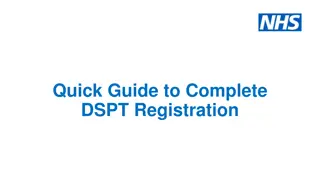





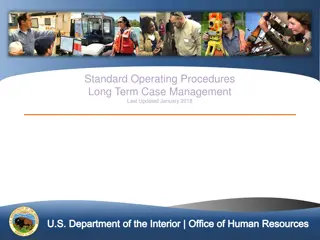




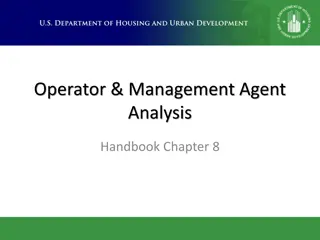
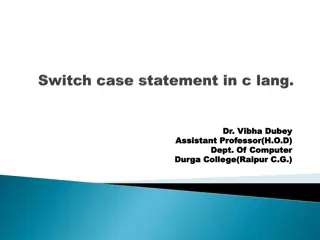



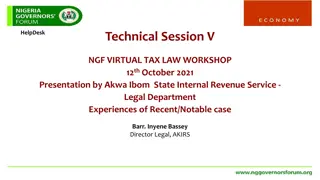
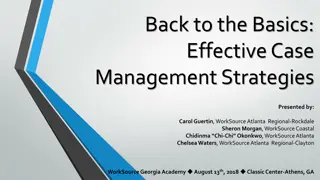


![Comprehensive Case Study on [Insert Case Title Here]](/thumb/159705/comprehensive-case-study-on-insert-case-title-here.jpg)

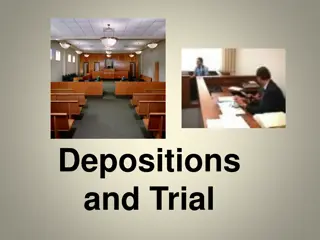

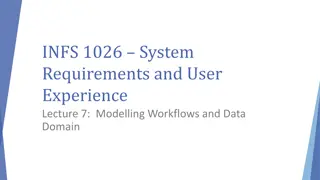

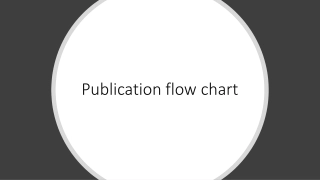
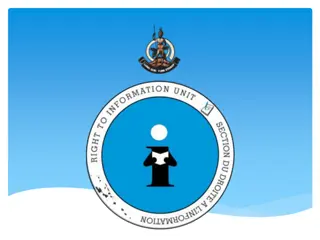


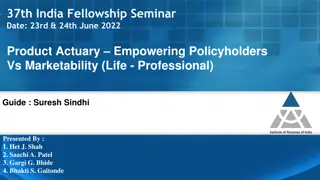





![Property Settlements in Family Law: Case Study of Stamatou & Stamatou [2022] FedCFamC1F 241](/thumb/63303/property-settlements-in-family-law-case-study-of-stamatou-stamatou-2022-fedcfamc1f-241.jpg)





